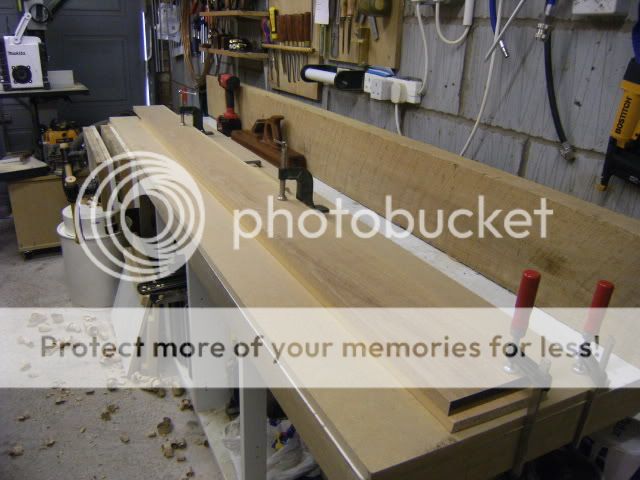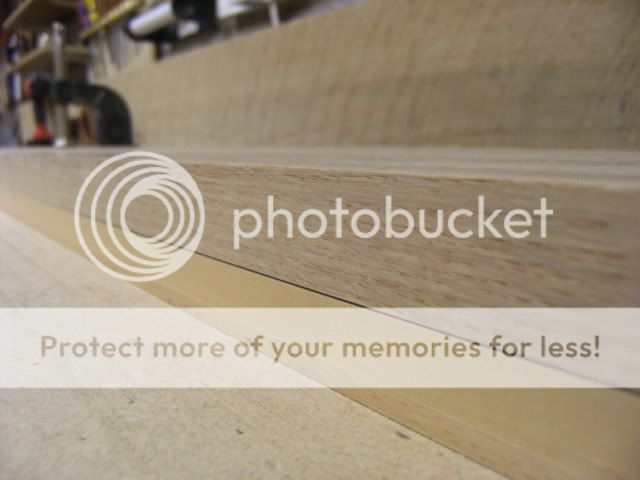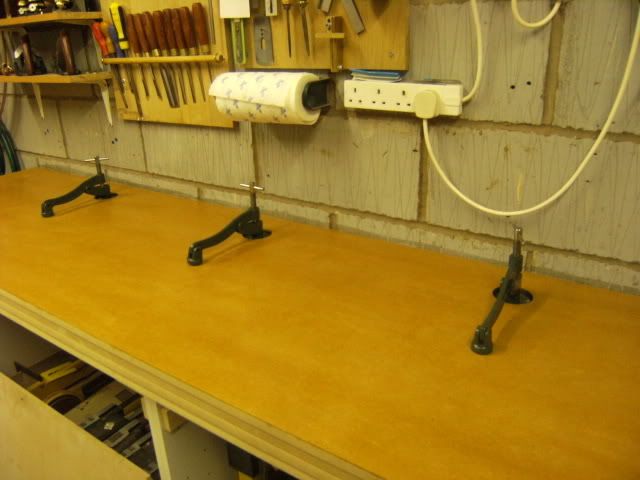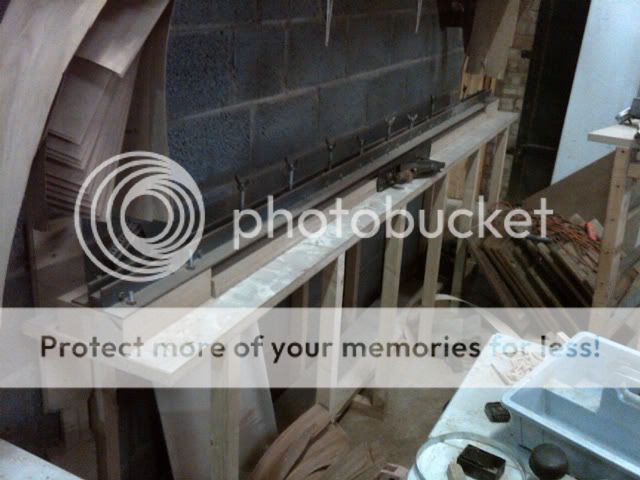I didn't want this to turn into a hijack of the other thread, so thought this could be a meeting place for thoughts on the subject of a large shooting board for the jointing of long edges.
Here is a link to the shooting board used by Terry Gordon. It isn't clear whether the board has a guide for the plane to run against, although I suspect it does.
This type of set-up could quite easily be knocked together with a few pieces of MDF - a piece for the base and a piece onto which the workpiece sits (it is this piece which will get cut away by the plane as with any normal shooting board).
For the hold down clamps, i've been thinking about getting a couple of
these. They could be mounted behind the shooting board, direct into the workbench. The shooting board could then be slid upto them and the workpiece clamped.
The prime problem is one of "feeding" the workpiece. This is obviously not possible if the work is to be clamped down. So it seems to me that the board must be clamped in its final position, so that when the plane makes its final cut (ie it has stopped cutting due to the shooting board), then the board will be flat. Therfore, if the board is hollow in its length, the hollow point will be the reference point which will be place on the edge of the shooting board, with the ends protruding the shooting board - these parts will be planed away, leaving a flat board (or as flat as the reference guide on the shooting board). If it has a bump in its length, then each end must touch the relevant part. If that makes sense.
I'm going to knock something together early next week and will hopefully be able to supply pics to demonstrate the above.
Cheers
Karl
Here is a link to the shooting board used by Terry Gordon. It isn't clear whether the board has a guide for the plane to run against, although I suspect it does.
This type of set-up could quite easily be knocked together with a few pieces of MDF - a piece for the base and a piece onto which the workpiece sits (it is this piece which will get cut away by the plane as with any normal shooting board).
For the hold down clamps, i've been thinking about getting a couple of
these. They could be mounted behind the shooting board, direct into the workbench. The shooting board could then be slid upto them and the workpiece clamped.
The prime problem is one of "feeding" the workpiece. This is obviously not possible if the work is to be clamped down. So it seems to me that the board must be clamped in its final position, so that when the plane makes its final cut (ie it has stopped cutting due to the shooting board), then the board will be flat. Therfore, if the board is hollow in its length, the hollow point will be the reference point which will be place on the edge of the shooting board, with the ends protruding the shooting board - these parts will be planed away, leaving a flat board (or as flat as the reference guide on the shooting board). If it has a bump in its length, then each end must touch the relevant part. If that makes sense.
I'm going to knock something together early next week and will hopefully be able to supply pics to demonstrate the above.
Cheers
Karl




































